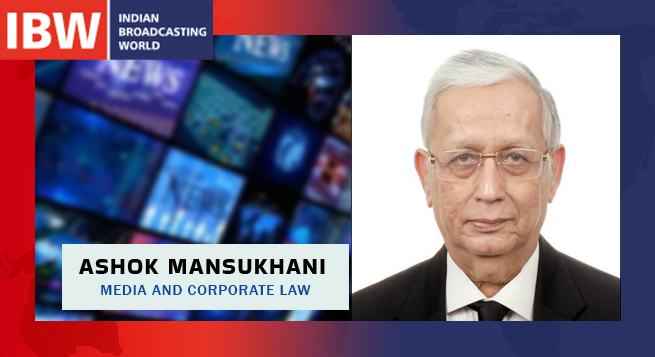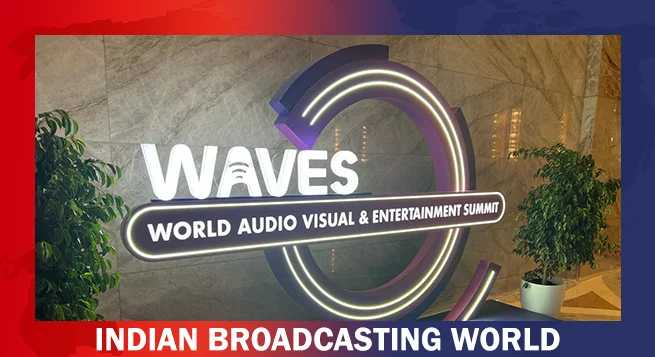Indian Media Scenario 2023
From a single-channel Doordarshan channel in 1982 to 900 TV channels in 2023, Indian media has seen an enormous explosion of multi-language content, with 200 million TV homes. There are 1500 Multi-System Operators, 1,00,000 local Cable Operators, three private DTH Networks, and Prasar Bharati Free Dish.
There are over 50 OTT Streaming Networks. KPMG estimates 627 million OTT subscribers by the end of 2023. Active mobile users numbered 01.10 Billion in India in early 2023. There are over 119 million active paid OTT subscriptions viewing streaming services, while the total number of OTT viewers exceeds 480 million.
A recent PWC report states that Entertainment and Media ( E&M) revenue in India witnessed a 15.9% growth to USD 46,207 million in 2022 compared to 2021.
The report states that “ increasingly cheaper data packages make the Internet accessible to a large population.” Internet access in the country is expected to generate a revenue of USD 29.1 Billion around the same time.
Powered by Over-the-top (OTT) platforms, the Gaming sector, Traditional TV, Internet, and Out-of-Home (OOH) advertising and the use of the metaverse, India’s E&M Industry is expected to grow exponentially at a compounded annual growth rate (CAGR) of 9.7% in 2023-2027, reaching USD 73,560 million in 2027 “ (PWC Global Entertainment & Media Outlook 2023–2027: India perspective July 2023).”
COMMENT
Legacy TV Broadcasting and their traditional modes of delivery through Cable and DTH are slowing down in India and are expected to grow by 3-4 % with an average watch time of four hours daily.
The strongest growth post-lockdown of 2020-2023 has been in the OTT Sector. Estimates that it is expected to grow from USD 16.02 billion in 2023 to USD 36.97 billion by 2028, marking a CAGR of 18.20 percent in the forecast period, should have gladdened the hearts of Regulators.
However, there is “alarm” that OTT, with over 480 million viewers, is growing “too fast” for the comfort of legacy media and certain quarters.
This has led to demands for a “level playing field”, which is accepted in the recent proposals in the new Broadcast Bill 2023, which proposes to “rein in” Digital Media by subjecting them to the same regulations as legacy media apart from revamping broadcast law.
Regulatory Scenario
Supreme Court judgment in The Secretary, Ministry Of Information and Broadcasting vs Cricket Association Of Bengal February 9 1995- 1995 AIR 1236, 1995 SCC (2) 161
In a seminal judgment on the Broadcasting rights of private Broadcasters and the establishment of an Autonomous Broadcast Regulatory Authority, the Supreme Court held that:
The right to freedom of speech and expression under Article 19(1)(a) of the Constitution of India includes the right to impart and receive information through electronic media like television.
The Court emphasised that the award of Broadcasting rights should be based on the principle of public interest, ensuring diversity and plurality in the media landscape.
COMMENT
In an epochal judgment, the Supreme Court directed that the Central Government take immediate steps to create an Independent and Autonomous Broadcast Regulatory Authority to regulate the airwaves representing all sectors and interests of society. As later events show, this has not become a reality in the past thirty years.
Cable Network Regulation Act 1995 – 25.03.1995
The live Broadcasts of the Gulf War by CNN in 1991 led to a great demand for live satellite telecasts by Indian viewers. Cable Networks had an explosive but uncontrolled growth, especially in urban India.
In 1993, the Rajasthan High Court, in the judgment of Shiv Cable TV System vs the State of Rajasthan dated 10.05.1993 AIR 1993 Raj 222, upheld that Cable TV falls within the realm of freedom of expression. However, it emphasised that this freedom is not absolute and can be subject to reasonable restrictions in the interest of public order, morality, and decency.
It noted that airwaves are public property, and the Government has the right to regulate them in the public interest. It acknowledged the lack of specific Rules and Regulations for licensing Cable Operators. It urged the Government to formulate clear guidelines and modalities for granting licenses promptly. This paved the way for developing a comprehensive regulatory framework for the Cable Industry.
In 1994, the Government introduced a Cable Ordinance with Cable Rules 1994, which became an Act only in 1995. The main intention was to regulate the ‘haphazard mushrooming of Television Networks.’ The key features of the Cable Act were:
A registration process for Cable Operators was introduced to lay down “responsibilities and obligations in respect of the quality of service both technically as well content-wise, use of materials protected under the copyright law, exhibition of uncertified films, and protection of subscribers from anti-national broadcasts from sources inimical to national interests”.
Content Regulation was introduced through the Programme and Advertisement Code in the Cable Act and Rules. The Act gave the Government the authority to regulate the content broadcast on Cable TV, ensuring that it adhered to the prescribed content guidelines and was suitable for all audiences.
The Programme Code had the following key features:
Prohibition on obscenity, defamation, and incitement: No programme shall contain anything obscene, defamatory, false, or suggestive of innuendo and half-truths.
Restriction on violence: Violence should not be depicted in a manner that glorifies or justifies it.
Protection of children: Programmes should not contain anything that exploits children or harms their well-being.
Salient Features of the Cable Act 1995
Promotion of local content: The Act encouraged the promotion of local content, boosting the domestic entertainment Industry.
Quality of Service: The Act and Rules for standardising the quality of Cable TV services were intended to ensure a basic quality threshold for Operators.
Addressing monopoly concerns: The Act and Rules sought to curb the development of Cable monopolies, promoting fair competition.
Conditional Access Systems -In 2003, the Cable Act was amended to ensure viewers could pay for only those channels they wished to see, and a new Conditional Access System (CAS) could be introduced. This was provided in Section 4A of the Cable Act, allowing viewers to select and pay for channels of their choice apart from enjoying a slate of free-to-air channels.
Three-tier self-regulation- In 2021, the Cable Rules were amended on June 17, 2021. The Ministry of Information and Broadcasting established a three-tier self-regulation and grievance redressal procedure.
The new Rules enacted through the Cable Television Networks (Amendment) Rules, 2021, would force “accountability and responsibility on the Broadcasters and their self-regulating bodies.” It aligned Television’s self-regulatory mechanism with OTT platforms and digital news publishers under the IT Regulations 2021.
A three-level redressal mechanism was introduced :
Self-regulation by the Broadcaster.
Self-regulating bodies of the Broadcasters.
An oversight mechanism by the Centre.
MSO Registration –On September 28 2023, the Government amended the Cable Rules, introducing a procedure for renewing MSOs’ registration. It introduced an enabling provision in the Rules for the sharing of infrastructure by the Cable Operators with broadband service providers to promote internet penetration to the last mile.
Decriminalised Provisions- On October 5, 2023, the Government amended the Cable Rules to provide an operational mechanism for implementing decriminalised provisions of the Cable Television Networks (Regulation) Act, 1995. The imprisonment provisions under Section 16 were replaced with monetary penalties and other non-monetary measures like advisory, warning, and censure.
COMMENTS
After the Cable Act was enacted in 1995, the media universe underwent significant technological developments like Direct to Home, Headend in the Sky, OTT Channels, and other forms of Digital Media.
The lockdown of 2020 only accelerated cord-cutting to streaming platforms; millions began watching live and stored content through internet devices and mobiles.
The Cable Act 1995 would have been abolished in a couple of years if the Convergence Commission of India Act had been passed in 2001, which did not happen for well-known reasons.
Further, in no other country but India, Broadcasters were governed only by guidelines of Downlinking and Uplinking Regulations under Allocation of Business Rules 1961, which were sometimes challenged in courts and did not have the full force of law.
Modern media is now transnational, and content is provided and streamed from different locations, which has made the Cable Act obsolete.
A new Broadcast Act was necessary to draw foreign investment and deal with content licensing, copyright, and competition issues.
Draft Broadcasting Services (Regulation) Bill 2023
On November 9, 2023, the Ministry of Information and Broadcasting released a draft of Broadcasting Services (Regulation) Bill 2023 for public comments. The bill intends to replace the Cable Television Networks (Regulation) Act of 1995, which has regulated the content and distribution of Linear TV for nearly 30 years.
In its explanatory notes, the Ministry of Information and Broadcasting stated that
“With new technologies and platforms, various Broadcasting Services have emerged, such as Direct-to-Home (DTH) and Internet-based Services like IPTV and OTT platforms. Considering the above, the Government has recognised the need to streamline the Regulatory framework and provide a cohesive legal framework for the diverse Broadcasting Services.
A streamlined Regulatory framework will bring clarity, consistency, and flexibility to Regulations while strengthening consumer protection and promoting ease of business.
A vital objective of the new Bill is to ensure ease of business and enhance the Broadcasters and Distribution Platform Operators’ adherence to the Programme Code and Advertisement Code.
It will create a level playing field, foster investment and innovation, adapt to emerging trends, safeguard consumer interests, simplify compliance, and encourage growth and competition. “
COMMENTS
The new Bill is far more comprehensive than earlier Bills, covers all forms of digital content, and is intended to handle all forms of future technology.
The legal framework is sought to be aligned with modern Broadcasting technologies and practices.
The Bill also provides more explicit regulatory guidelines and compliance mechanisms for Broadcasters and Operators.
A critical analysis of the draft Bill below discusses many issues of public concern that need resolution before the bill becomes law.
Critical Highlights of the Bill
The Bill comprises six Chapters, forty-eight Sections and three Schedules. Using the explanatory notes attached to the draft Bill, comments on critical provisions are given below:
- Chapter 1- Consolidation and Modernization of Broadcasting Regulation/ Contemporary Definitions and Future-Ready Provisions: (Sections 1 and 2)
“The Bill is designed to cater to the needs of all service providers in the sector, ranging from traditional broadcasters to those utilising the latest technological advancements.
This inclusiveness allows the Act to effectively regulate and govern all types of broadcasters, irrespective of their operational methods or technologies.“
The Bill introduces comprehensive definitions for contemporary broadcasting terms and incorporates provisions for emerging technologies.
COMMENTS:
The Bill is a welcome regulatory move that brings diverse Broadcast content providers, distribution chains, and even future technological developments under a single Broadcasting Act.
However, an in-depth analysis below reveals that the Bill can, in its present form, tighten executive control on the entire gamut of communication media by assuming power through rule-making power and the issue of guidelines and orders, which could go far beyond the legislation’s core intent and purpose.
In its present shape, the Bill will be open to constitutional challenges on freedom of expression even though the response from the Industry is very muted for various reasons.
The Indian Broadcasting and Digital Federation President, Mr K. Madhavan, told a business daily that the Bill is attempting to “force fit” video streaming services into a linear broadcasting framework, which could result in structural issues in regulation.
Chapter 2- Regulatory Purview Enhanced (Section 3-18)
The Chapter is divided into four parts:
Part A covers Broadcasters and Satellite Broadcasting Networks. (Sections 4-14) Broadcasters need approval for transmitting programmes, while Network Operators must register to operate.
The Broadcasters and Satellite Network Operators must fulfil specified obligations, maintain accurate subscriber data, etc. These regulations are intended to ensure compliance with standards, fairness, and the country’s smooth functioning of Broadcasting Services.
Part B deals with Radio Broadcasting Networks. (Section 15) Individuals or organisations intending to operate a Radio Broadcasting Network must apply for a letter of intent. Permission may be granted subject to prescribed clearances and requirements.
Part C pertains to Internet Broadcasting Networks. (Section 16-17) Universal license holders can provide IPTV Services by intimating the Central Government. OTT (Over-the-Top) Broadcasting service providers meeting the prescribed threshold must inform the Central Government.
Part D relates to Terrestrial Broadcasting Networks. (Section 18) Persons intending to operate a Terrestrial Broadcasting Network must apply for permission. Permission may be granted subject to prescribed terms and conditions and clearances.
No person can provide Broadcasting Services or operate a Broadcasting Network without proper registration or intimation. However, entities like Government departments, political parties, and public authorities are not eligible for registration, except for authorised entities like Prasar Bharti or Parliament-operated channels.
Previous entities operating under an authorisation must transfer their operations to eligible entities by the Act. The Central Government may allow registration for social objectives with specific terms and conditions.
It also specifies that the Central Government has the authority to regulate Services closely connected to Broadcast Networks and Broadcasting Services. These Regulations encompass eligibility criteria, terms, conditions, and fees.
Broadcasters and Network Operators have specified obligations. They must transmit programmes in compliance with fixed terms and conditions, ensuring their Services adhere to the Programme and Advertisement codes.
The Broadcasting Services should not interfere with authorised Telecommunication systems and must meet specific interference standards.
Operators are also expected to comply with Government orders and directions, use equipment meeting Government standards, and provide information upon request.
Different Rules can be made for different types of Broadcasters and Network Operators, allowing for tailored regulations based on the nature of their operations.
There is a mandate for compulsory transmission of specific (Prasar Bharati) channels.
Guidelines for providing Platform Services may be issued for different Broadcasting Network Operators.
Provisions for the suspension, cancellation and renewal of registration are provided.
Applicants can appeal registration-related decisions to the Appellate Authority, ensuring a fair and transparent process.
COMMENTS
All types of Broadcasters and Distribution Networks are covered in this Chapter. While a level playing field Regulation is sought to be created, there are differences between Broadcasters who must ‘apply’ to Distribution Network Operators, who must ‘register’; Internet Broadcasters with Universal Licence to ‘intimate’; to radio Broadcasters, who must use a ‘letter of intent’; to terrestrial Broadcasters who must ‘apply’.
The rest of the chapter is couched in general terms like “transmitting programmes in compliance with specified terms and conditions (nothing is spelt out and will be covered in Rules. Operators are to comply with government orders and directions (not set), the compulsory transmission of Prasar Bharati channels, and provisions for suspension/cancellation and renewal of registration with the right of appeal to Appellate Authority (not specified).
This Chapter needs greater clarity than just specifying actions to be taken through Rules/Guidelines and Orders, as subordinate legislation cannot override the primary intent and purpose of the Act as upheld by the Supreme Court in many judgments. In the State of Bombay v. M/s. Bombay Municipal Corporation (1952) AIR 1952 SC 175, the Supreme Court held that subordinate legislation must be “in aid of and not in derogation of” the parent Act.
C Standards, Accessibility, and Access Control measures (Sections 19-23)
Section 19 states that any Programme or Advertisement broadcast through Television, Radio, or other Broadcasting Services must follow the Programme and Advertisement codes. These codes may vary depending on the type of Broadcasting Service.
Section 20: Individuals or organisations broadcasting news and current affairs content online, such as through websites, social media, or news portals, must follow the Programme Code and Advertisement Code mentioned in Section 19.
Section 21: The Government can provide guidelines to Broadcasters to classify their programmes into different categories based on content, theme, and target audience. These categories will have relevant ratings and descriptors. Broadcasters must prominently display the programme classification at the show’s beginning, allowing viewers to make informed decisions.
Section 22: Broadcasting Network Operators will have to implement Access Control Measures for programs that are classified as appropriate for restricted viewing (e.g., adult content). These measures ensure that only the intended audience can access such content.
Section 23: The Ministry of Information and Broadcasting may issue Accessibility Guidelines to make Broadcasting Services more accessible to persons with disabilities. These Guidelines may include adding subtitles, audio descriptions for the blind, sign language translations, and using accessible applications.
Broadcasters may be required to make a certain percentage of their programmes accessible within a specified time frame. If there is a violation of the Accessibility Guidelines, penalties may be imposed on the Broadcaster or Broadcasting Network Operator.
COMMENTS
This is one of the most controversial amendments to bring digital media under the control of the omnipresent Programming and Advertising Code applicable to legacy Broadcasters and Distribution Platform Operators under the Cable Act 1995.
The Delhi High Court had upheld the Government’s powers to enforce the Programme Code against erring Broadcasters in the case filed by Viacom 18 vs UOI in LPA 374/2013, banning the telecast of a programme on the channel Comedy Central for some days. It held that “the appellant, in the facts and circumstances aforesaid, has not conducted itself responsibly and has abused the faith reposed in it under the self-regulatory regime”.
An appeal by Viacom 18 in the Supreme Court is pending in SLP(Civil) 32182/2014, though the Supreme Court allowed the Channel to be telecast, excluding the offensive programmes in its interim order dated 28.11.2014.
According to a recent Internet and Mobile Association of India report, nearly 480 million OTT users will be nationwide by the end of 2023.
Currently, OTT platforms are governed by the Information Technology (Intermediary Guidelines and Digital Media Ethics Code) Rules 2021, which shifted responsibility for content to the intermediaries and digital publishers.
Significant social media firms have to appoint a chief compliance officer and have a nodal contact person who can be in touch with law enforcement agencies 24/7. Social media platforms will also have to name a grievance officer who will register the grievance within 24 hours and dispose of it within 15 days.
Removal of content: If there are complaints against the dignity of users, particularly women – about exposed private parts of individuals or nudity or sexual acts or impersonation, etc. – social media platforms will be required to remove that within 24 hours after a complaint is made.
There will be three levels of Regulation for news publishers — self-regulation, a self-regulatory body headed by a retired judge or an eminent person, and oversight from the Information and Broadcasting Ministry, including codes of practices and a grievance committee.
Litigation on IT Rules 2021 on the Digital Ethics Code has been pending in various High Courts. All the cases have been transferred to the Supreme Court, which will hear the consolidated appeals in due course. Meanwhile, stay orders given by various courts against some parts of the Rules remain in effect.
One controversial provision stipulates that all individuals or institutions broadcasting news and current affairs content online through websites, social media, or news portals will be covered by the Programme and Advertisement Code provisions. This can have a chilling effect on online media unless the Government lets the self-regulatory triple structure sustain itself and steps in to regulate content affecting extreme cases like national security, etc.
One of the possible avenues the Government can consider is to vary and relax the Programme Code for Digital and Streaming Content. This is to ensure that the vibrant digital media is neither homogenised nor chilled by harsh regulation.
A welcome new provision is accessibility guidelines to enable content for persons with disabilities. As per the 2011 census, there were around 26 million people with disabilities, which may rise by 2023 to 35 million. Hopefully, this will be a voluntary provision allowing Broadcasters and Content Providers to select content progressively for watching by disabled people.
Regulatory Structure (Sections 24-29)
This chapter outlines the Regulatory structure for Broadcasting content. The aim is to ensure that Broadcasters and Broadcasting Network Operators comply with the Rules regarding content and address any complaints or grievances related to content violations that may arise.
(Section 24) Every Broadcaster or Broadcasting Network operator must establish a Content Evaluation Committee (CEC) with members from various social groups, including women, child welfare, scheduled castes, scheduled tribes, minorities, and others, as specified.
The Government can define the CEC’s size, quorum, and operational details. The Broadcaster must inform the Government and disclose CEC members’ information on their website. Broadcasters can only air programmes certified by the CEC, except for specific programmes exempted by the Government.
The CEC’s certificates must include prescribed details and be displayed as specified. These provisions will come into effect 180 days after the Act’s enforcement.
COMMENTS
All Television Broadcasters like Disney Star and Zee and Streaming platforms like Netflix and Amazon Prime have their content moderation standards, practices, and internal monitoring mechanisms.
Now, the Government wants the Broadcasters/OTT Platforms/Others to set up a Content Evaluation Committee consisting of members from various social groups whose size and operational details will be decided by the Government.
This is an unwarranted interference under Article 14/19 of the Constitution and needs to be reconsidered.
(Section 25-29) There are three main components of the Regulatory structure defined in this chapter:
(Section 25)Self-Regulation by Broadcasters and Broadcasting Network Operators: Broadcasters and Network Operators must appoint a Grievance Redressal Officer to handle complaints about content violations.
They must also be members of a self-regulatory organisation (SRO) established for this purpose.
Additionally, they must set up mechanisms for filing and addressing complaints and make information about these processes easily accessible.
(Section 26) Self-Regulatory organisations: SROs are bodies formed by Broadcasters, Network Operators, or Associations. Once registered with the Government, these organisations are responsible for addressing grievances related to content violations that Broadcasters or Network Operators have not resolved within a specific time frame.
They also handle appeals filed by complainants against the decisions made by Broadcasters or Network Operators. SROs provide guidance and advisories to their members to ensure compliance with the Broadcasting Rules.
(Section 27-29) Broadcast Advisory Council: The Government will establish a Broadcast Advisory Council, consisting of independent experts and Government representatives, to oversee the implementation of the Regulations. The Council will receive complaints related to content violations and review them. Based on their examination, they make recommendations to the Government.
The Government then considers these recommendations and issues appropriate orders and directions. The Council can form review panels to assist with its functions as needed. These panels are assigned specific cases or appeals and provide their recommendations, which are considered recommendations of the Broadcast Advisory Council.
COMMENTS
In the case of Nilesh Navalkha vs UOI in(PIL (ST) No. 92252/2020), the Bombay High Court, in its judgment dated 18/01/21, was highly critical of the leeway given by the Government to news Broadcasters on self-regulation of Broadcast content. The Court found it highly ineffective and lacking transparency and accountability. Key observations were:
Lack of transparency: The Court found that the self-regulatory bodies lacked transparency in their proceedings, making it difficult to scrutinise their decisions.
Inconsistent application of standards: The Court observed that the self-regulatory bodies inconsistently applied their standards, leading to arbitrary and discriminatory decisions.
Limited scope of Regulation: The Court noted that the self-regulatory bodies had limited powers and could not effectively address severe violations of Broadcasting standards.
Conflicts of interest: The Court expressed concern about potential conflicts of interest within the self-regulatory bodies, as they were primarily composed of representatives from the Broadcasting Industry.
An appeal filed by Broadcasters against the Bombay High Court decision is pending a final hearing in the Supreme Court. In a preliminary hearing in August 2023, the Chief Justice asked the Broadcaster body to find ways to tighten self-regulation. Pointing out that self-regulation of television channels has proven “ineffective”, the Supreme Court said it would issue guidelines to strengthen such self-regulation.
Meanwhile, the Government has decided to bring a Broadcast Advisory Council as the Content Czar consisting of independent experts and government representatives, all selected to oversee the implementation of the Regulations.
This draft provision ignores the Bombay High Court‘s direction in the Navalakha case to establish an independent mechanism for reviewing the regulatory bodies’ decisions, as the Broadcast Council in the proposed Bill merely replaces the Inter-Ministerial Committee.
The organised response of the powerful Broadcasters and influential Streaming Network Operators may, hopefully, persuade the Government to revisit this provision.
Chapter V: Inspection and Penalties (Sections 30-36)
This chapter deals with inspections and penalties for Broadcasting Networks and Services.
(Section 30-)The Central Government and its Authorised Officers can inspect these Networks and Services. Operators must provide the necessary equipment for interception or monitoring as directed.
(Section 31-32 )Seized equipment can be confiscated unless operators demonstrate compliance. Companies and the individuals responsible can be liable for infringements unless they prove a lack of knowledge or due diligence.
(Section 35) Penalties can be advisory, censure, warning, and monetary penalties. Non-compliance with the Program and Advertisement Codes can result in the removal of objectionable programmes, orders, apologies, off-air periods, or cancellation of registration.
There are provisions for imprisonment and fines for a few severe offences. The quantum of monetary penalty and fine is dependent on the financial capacity of the entity or individual.
COMMENTS
As late as October 2023, the Government had eased penal provisions of the Cable Act 1995, which stated that “To make the Cable Television Networks (Regulation) Act, 1995 more business-friendly and to boost the investor confidence in the sector, punishments specified under Section 16 were re-examined and were decriminalised through the Jan Vishwas (Amendment of Provision) Act, 2023.
The new draft provisions seem to reintroduce penalties, a retrograde provision converse to the Jan Vishwas (Amendment of Provision) Act, 2023 and needs to be revisited.
(Section 36 )The Government can also prohibit programmes or operations for public interest or national security reasons.
COMMENTS
Right from 1950 onwards, the Supreme Court has consistently upheld freedom of expression for media subject to reasonable restrictions specified in Article 19 (2). The current takeover norms under section 36 will be set only in the Rules and could be misused to “gag the media”, which this writer argues cannot be the intention of the Government nor will be upheld by the court.
While temporary suspension of Internet rules exists and was recently utilised in Manipur, it is inconceivable if this provision leads to blank screens for any extended time.
If this drastic provision is to stay in statute books, the rarest of the rare provisions that can be used in case of war or national emergency must be spelt out, and a judicial tribunal or the Courts must expeditiously decide its legal challenge.
Miscellaneous Provisions (Sections (37-48)
The various provisions covered under this chapter include:
(Section 37) Infrastructure Sharing: This section allows multiple Broadcasting Service providers to share infrastructure and equipment voluntarily. They need to apply to the Central Government with details of the infrastructure proposed to be transferred and the roles and responsibilities of the entities involved. The Government will review and approve or reject the application based on specific criteria and conditions.
(Section 38) Right of way for Operators: This section defines the right of way for Broadcasting Networks. It outlines the procedures and conditions for facility providers to seek permission to establish promoting Networks on public and private properties.
Power of Central Government to Establish Common Ducts and Corridors: The Government may establish common ducts or corridors for Broadcasting Networks and provide open access to facility providers on prescribed terms.
Dispute Resolution: District Magistrates have exclusive powers to resolve disputes related to this section, and their decisions are “final”.
COMMENTS
Right-of-way bureaucratic blocks have seriously constrained the cable industry’s healthy growth, especially in cable dark areas. These new provisions will go a long way in helping the Cable Industry thrive. Establishing common ducts or corridors, especially in new buildings, will be very helpful for both Cable and internet supply.
Though the latest census data goes back to 2011, even so, it is commonly accepted that there are at least 310 million homes, which means the Cable Industry can strive to reach out to the balance of 110 million non-TV homes subject to meeting stiff competition from Free Dish DTH and conventional DTH platforms.
(Section 39) Provisions for emerging and future Broadcasting technologies: This section empowers the Central Government to make the provisions of this Act applicable to Broadcasting Networks that use new technologies and methods. The Government can do so if these Networks meet specific criteria, are similar to existing Broadcasting Networks, and operate as systematic business, professional, journalistic, or commercial activities.
COMMENTS:
While this is merely an enabling section, it is not always possible for Regulation to keep up with the march of technology.
A recent Deloitte study reveals that “in a short time, Generative AI has empowered legions of creators, disrupted Industry workflows, and sharply amplified challenges to intellectual property, trust, and ownership. Ultimately, these tools could shape a fundamentally new media and entertainment world.”
It is hoped that the MIB will keep itself updated with the latest Broadcast technologies and keep pace with effective Regulation.
Europe has just passed strict AI regulations that will take effect from 2024 to 2026, affecting the unrestrained use of AI in media content.
India has just set up an AI Mission, which will set up a mechanism for ensuring ethical use of AI. It is hoped that issues of controlling unethical use of AI will not fall between inter-ministerial tussles.
One of the gross misuses of AI has been the deep fakery of celebrities worldwide, including India. How MIB plans to coordinate with MIETY on this and future vexing issues remains a question mark.
(Section 40) Registration for Audience Measurement Services: This section states that individuals or organisations intending to provide Audience Measurement Services must apply for registration to the registering Authority. The Authority will consider eligibility criteria and conditions before granting registration. Applicants can appeal a refusal by the Registering Authority to the Appellate Authority.
COMMENTS
At present, the audience ratings are provided by BARC- Broadcast Audience Ratings Council, a non-profit company. Established in 2010, BARC is an Industry-led body jointly owned by Broadcasters, advertisers, and advertising agencies. BARC collects data using a people meter system, which tracks the viewing habits of a panel of households across India. This data is used to generate Television Rating Points (TRPs), which measure the popularity of television programs and channels.
It is unclear whether BARC will survive the new provisions of the Broadcast Act 2023. As it is an Industry-led body, it may be allowed to continue, but that remains to be seen. There is no element of self-regulation/independence in Section 40, which is unsuitable for a vibrant industry.
(Section 41) Transitional provision: This section ensures a smooth transition for individuals or organisations already registered or granted permission under previous Broadcasting Regulations. They will be deemed registered, approved, or notified under this Act. However, they may need to provide a notification to self-certify compliance with the provisions of this Act within a prescribed period.
(Section 42) Application of other laws not barred: This section clarifies that the provisions of this Act are in addition to, and not in derogation of, other existing laws related to various areas such as drugs, cosmetics, trademarks, cinematography, consumer protection, and Telecommunications.
(Section 43) Power to make Rules: This section grants the Central Government the power to make Rules for the effective implementation of the provisions of this Act. The Rules can cover various matters, including registration, eligibility criteria, obligations, penalties, and other Broadcasting Services and Network details.
(Section 44) Power of the Central Government to issue Guidelines: This section authorises the Central Government to issue Guidelines to fulfil the objectives of this Act.
(Section 44) Existing Guidelines issued before this Act will be deemed valid, but any inconsistency with this Act will be void. Penalties specified in these Guidelines will apply.
(Section 45) Delegation of powers by the Central Government: This section allows the Central Government to delegate its powers and functions under this Act, except for rule-making powers and certain specified powers, to designated officers.
(Section 46) Rules to be laid before Parliament: This section mandates that all Rules made under this Act must be presented before both Houses of Parliament for 30 days. If both Houses agree to modify or reject the law, it will be adjusted accordingly or become void, but previously taken actions based on the rule will remain valid.
(Section 47) Power to remove difficulties: This section empowers the Central Government to make provisions through Orders published in the Official Gazette to overcome any challenges in implementing the provisions of this Act. These Orders need to be laid before both Houses of Parliament.
(Section 48) Savings and repeal: This section addresses the continuity of Rules and Notifications made under the previous Cable Television Network (Regulation) Act, 1995. Such Rules and Notifications will be deemed made under this Act unless they are inconsistent.
The Cable Television Network (Regulation) Act, 1995, will be repealed on a notified date. Actions taken under the repealed Act will be considered as if done under this Act, and pending proceedings will continue.
CONCLUSION:
The new bill is based on the feedback on the proposed amendments to the Cable Network Regulation Act Draft Act of 2020. However, the scope of the Bill has been vastly expanded to rope in the very vibrant digital media into its regulatory confines. It will apply to new upcoming technologies like AI and Virtual Reality.
The new Bill is a determined effort on the part of the Government to maintain control over all forms of content, especially when self-regulatory mechanisms fail.
Many provisions will provoke debate, but much hard work has gone into framing the Bill and looking at the present-day scenario, it would sail through Parliament like the Telecom Bill passed in three days.
However, there are serious constitutional concerns about freedom of expression, especially in the digital media sphere, which has over 400 million active users in India on media platforms like Facebook, WhatsApp, and Instagram. Music streaming services like Spotify, Gaana, and Jio Saavn are also gaining popularity, with over 200 million active users. At least 32% consume news daily at least once or twice on digital media.
There are approximately 73 million cable subscribers, 71 million DTH subscribers, and 45 million Free Dish and Terrestrial viewers, totalling 189 million homes. The total size of the Indian Broadcast TV and Digital content market makes it among the largest in the world.
Millions of viewers are entitled to enjoy watching and consuming content without unnecessary executive constraint, as is the mandate of the Constitution and the Supreme Court.
It is hoped that the Broadcast Bill in its current shape will be completely revamped and that the Government does not resort to constant tinkering through the issue of Rules/Guidelines and Orders as there is abundant Supreme Court case law that they are subordinate legislation and cannot override the pith and substance of a legislative Act.
In a recent judgment, the Supreme Court held that “delegated legislation should not travel beyond the purview of the Parent Act. If it does, it is ultra vires and cannot be given any effect,”
It is hoped that sufficient time will be given for an informed industry and viewer debate. Currently, time is available till January 14 2024, to send responses.
With a few months left to go for the General Elections when the term of the Lok Sabha ends, it is hoped that the Government will not push through the bill. In its present form and present a revamped bill in the new Parliament.
(Ashok Mansukhani, the author, is a media veteran having spent decades with the government and private sector media organizations, specializing in legal and policy matters. He retired from the Hinduja group having being part of the leadership team that built the group’s media business. He also sits on the advisory board of the Indianbroadcastingworld.com. He practises law at the Bombay High Court specialising in Media and Corporate Law. The views expressed in the write-up are those of the author and Indianbroadcastingworld.com need not necessarily subscribe to them.)
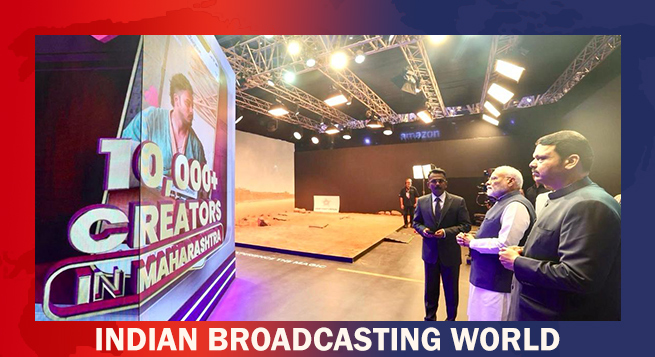 MIB to unveil M&E sector statistical handbook today at WAVES
MIB to unveil M&E sector statistical handbook today at WAVES 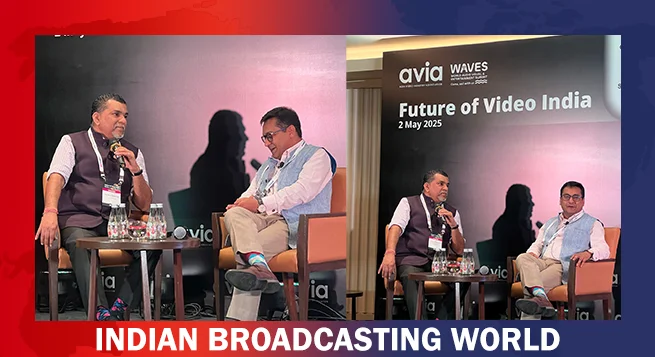 Pay TV leaders chart course for India’s linear TV in digital age
Pay TV leaders chart course for India’s linear TV in digital age 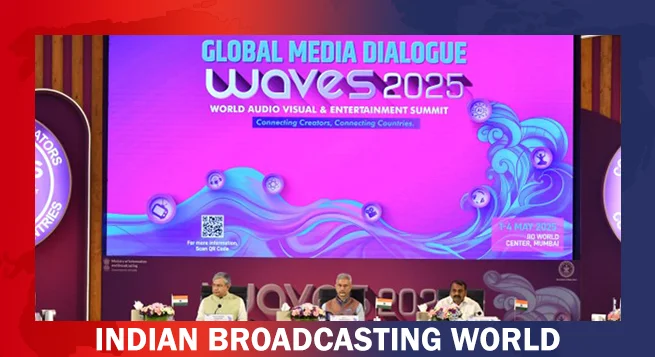 WAVES 2025: Media dialogue backs creativity, heritage & ethics in AI Era
WAVES 2025: Media dialogue backs creativity, heritage & ethics in AI Era 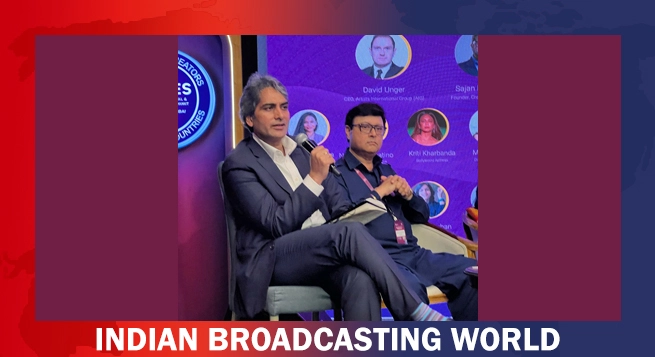 Sudhir Chaudhary announces new show for DD News, says “Good content still has a place” at WAVES 2025
Sudhir Chaudhary announces new show for DD News, says “Good content still has a place” at WAVES 2025 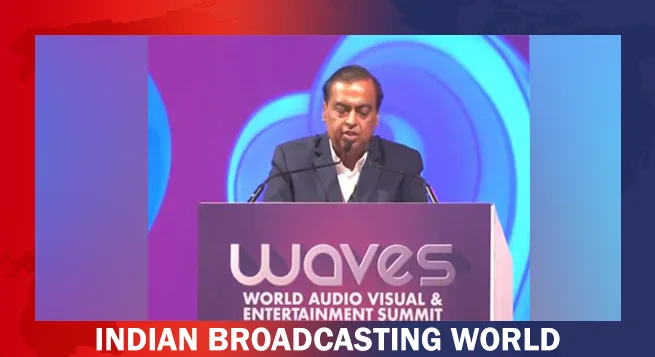 India can lead global entertainment revolution: Mukesh Ambani
India can lead global entertainment revolution: Mukesh Ambani 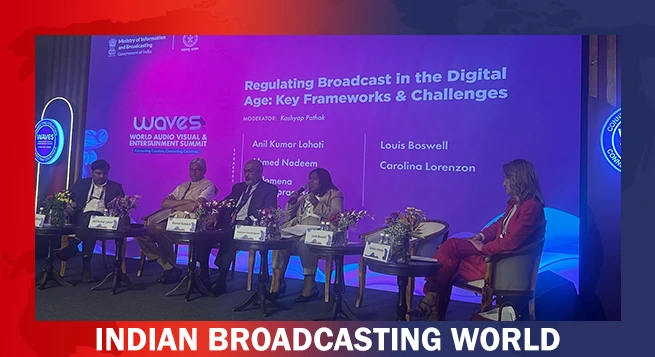 TRAI chief not in favour of separate rules for OTT, legacy b’casters
TRAI chief not in favour of separate rules for OTT, legacy b’casters 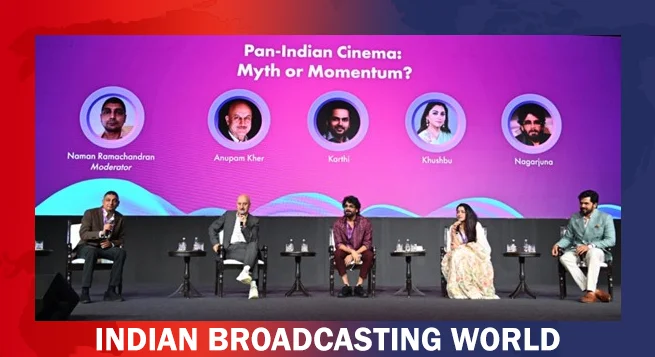 Language no bar; stars say Indian cinema is united by emotion, culture
Language no bar; stars say Indian cinema is united by emotion, culture 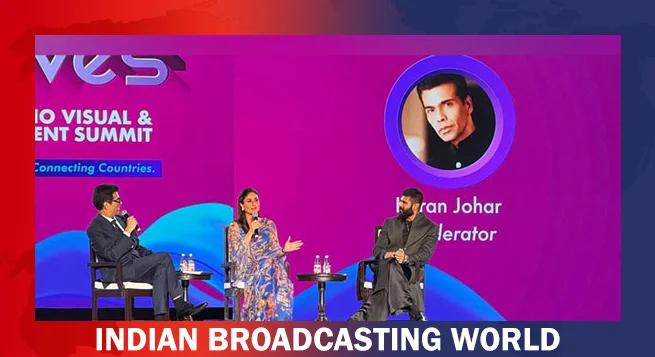 Spielberg recognised me from ‘3 Idiots’, says Kareena at WAVES 2025
Spielberg recognised me from ‘3 Idiots’, says Kareena at WAVES 2025 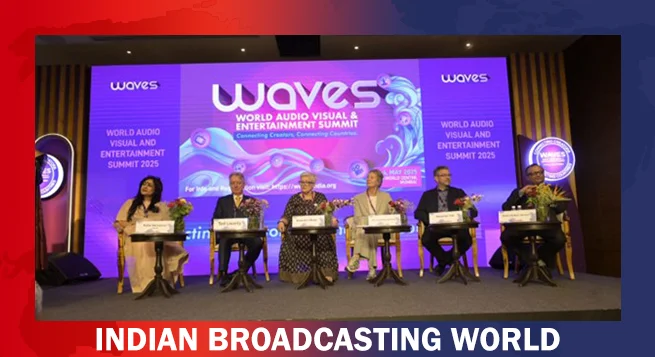 Digital Radio is the future, but analog must co-exist says at WAVES 2025
Digital Radio is the future, but analog must co-exist says at WAVES 2025 


